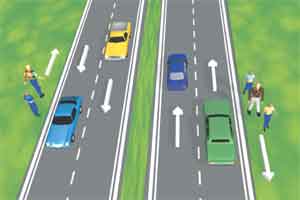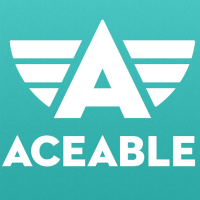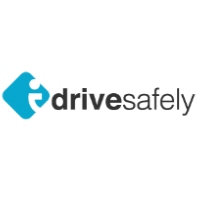While a bit inconvenient, it is possible to change information on your California driver’s license. In this guide, you’ll learn about the changes you can make and how to make them.
To Replace A Lost/Stolen Or Damaged Driver License
If your driver’s license is lost, stolen, or damaged, you must go to a DMV office, complete the Driver License or Identification Card Application (DL 44) form, and pay a fee for the replacement. You should also present photo identification. If the DMV cannot confirm your identity, you will not be issued a temporary driver’s license.
If you are a minor, your parent(s) or guardian(s) must sign the (DL 44) form. If both parents/guardians have joint custody, both must sign.
Once a replacement driver’s license is issued, the previous driver’s license is no longer valid. Destroy the old driver’s license if you find it later.
How To Make Name Changes On A California Driver’s License
When you legally change your name because of marriage or other reasons, be sure to change your name with the Social Security Administration (SSA) before coming into the DMV.
Bring your driver’s license to the DMV in person, along with your marriage certificate or other acceptable verification of your “true full name” (refer to Obtaining a Driver License section). You must complete the Driver License or Identification Card Application (DL 44) form and pay the applicable fee. The DMV will electronically verify your name, birth date, and social security number (SSN) with the SSA.
A new picture, fingerprint, and signature will be taken. Your old photo DL/ID card will be invalidated and returned to you.
California Driver’s License Renewals
The DMV sends a renewal notice to your address of record about two months before your driver’s license expires. Follow the instructions on the renewal notice. If you do not receive a renewal notice, go online or call to make an appointment to renew your driver’s license (refer to the DMV Information page for details on appointments).
Qualified drivers may be eligible to renew their driver license online at DMV’s website at the www.dmv.ca.gov or by mail.
The DMV may issue a driver license for five years. The driver license expires on your birthday in the year shown on the driver license, unless otherwise indicated. It is against the law to drive with an expired driver license.
A driving test may be required as part of any driver license transaction. Driving tests are not required simply because of age.
If the DMV cannot confirm your identity, you will not be issued a temporary driver license.
For other types of driver, licenses refer to the California Commercial Driver Handbook (PDF), Recreational Vehicles and Trailers Handbook, or California Motorcycle Handbook.
California Driver’s License Renewal By Mail, Internet, Or Telephone
If you have not received two consecutive five-year driver license extensions, you may be eligible to renew by mail, Internet, or telephone without taking a law test, if:
- Your current driver license expires before age 70.
- You do not have a probationary driver license (CVC §14250).
- You have not violated a written promise to appear in court or to pay a fine within the last two years.
- You are not suspended for driving with an illegal Blood Alcohol Concentration (BAC) level, or refusing or failing to complete a chemical or preliminary alcohol screening test within the last two years.
- You do not have a total violation point count greater than one point.
NOTE: If you renew by telephone, you must have the Renewal Identification Number (RIN) available when you call. This can be found on your renewal notice.
California Driver’s License Extension
If you are away from California (up to one year), you may request a free one-year extension before your driver license expires. Mail your request to DMV, PO Box 942890, Sacramento, CA 94290-0001. Include your name, driver license number, birth date, California residence address, and out-of-state address. Limited term drivers are not eligible for this extension.
When Must You Have A Driver’s License In Your Possession?
You must always have your driver’s license with you when you drive. Show it to any police officer who asks to see it. If you are in a collision, you must show it to the other driver(s) involved (refer to the “Involved in a Collision” section).
Making Address Changes On Your California Driver’s License
When you move, you must give the DMV your new address within 10 days. There is no fee to change your address. You may notify the DMV of your address change for your driver license, identification card, and vehicle(s) online at www.dmv.ca.gov. You may also download a Change of Address (DMV 14) form and mail it to the address on the form, or call the DMV at 1-800-777-0133, and request a DMV 14 form be mailed to you.
A new driver license or identification card is not issued when you change your address.
You may type or write your new address on a small piece of paper, sign, and date the paper and carry it (do not use tape or staples) with your driver license or identification card.
If you change your address at a field office, the DMV representative will give you a Change of Address Card (DL 43) to complete and carry with your driver license or identification card.
Reminder: The U.S. Postal Service forwards some DMV correspondence; however, it is your responsibility to ensure the DMV has your correct mailing address on record.
California DMV Vision Examinations
DMV screens all drivers to measure vision with or without corrective lenses. If you do not meet DMV’s vision standard (20/40), you will be required to visit a vision specialist. The DMV representative will give you a Report of Vision Examination (DL 62) form to have completed by the vision specialist. If your vision is not worse than 20/70, DMV may issue you a 30-day temporary driver license to allow you time to have your vision checked.
California Medical Information Card
Call 1-800-777-0133 to obtain a Medical Information Card (DL 390) to list your blood type, allergies, name of physician, and other medical information. It can be carried with your DL/ID card.
Making Organ and Tissue Donation Changes In California
You may sign up to donate your organs and tissue for transplantation after your death. When you apply for or renew your driver license or ID card, check the “YES! Add my name to the donor registry.” box on the renewal form to place your name on the Donate Life California Organ Tissue Donor Registry. If you need additional information, check the “I do not wish to register at this time.” box and call Donate Life California where Donate Life California representatives can answer any questions you may have about organ and tissue donation. You may also use the renewal form to financially contribute to the registry by checking the “$2 voluntary contribution to support and promote organ and tissue donation.” box.
If you are older than 13, and under 18 years of age, you may register with Donate Life California, provided your parent(s) or guardian(s) authorize the donation.
For more information about the donor registry, adding restrictions to your gift, and the donation process, visit the Donate Life California website at donateLIFEcalifornia.org, or call 1-866-797-2366. You may consent to the organ and tissue donation on their website; however, a new driver license or identification card with a pink dot will not be issued until you check “YES! Add my name to the donor registry.” box on a driver license or identification application form and DMV processes the new transaction (replacement, renewal, change of name, etc.).
California Veteran Benefit Changes
Have you ever served in the United States Military? The California Department of Veterans Affairs (CalVet), CalVet Connect program, would like you to receive information regarding benefits, such as employment, housing, education, and health care services, for which you may be entitled. Check the “I have served in the United States Military and I want to receive veteran benefits information.” box on the Driver License or Identification Card Application (DL 44) form. The DMV will transmit your name and mailing address to the CalVet for them to forward you benefits information.
To locate a CalVet office near you, refer to your local government listing in your telephone book, or visit the CalVet’s website at www.CalVet.ca.gov or the DMV’s website at www.dmv.ca.gov.
Unlicensed Drivers In California
It is against the law to loan your vehicle to a person who is unlicensed or whose driving privilege has been suspended. If an unlicensed person is caught driving your vehicle, it may be impounded for 30 days (CVC §14607.6).
No person of any age may drive on a highway or in a public parking facility unless he or she has a valid driver license or permit. The law also states that you must not employ, permit, or authorize any person to drive your vehicle on a public street or highway, unless he or she is licensed to drive that class of vehicle.
A person must be at least 21 years old to drive most commercial vehicles for hire in interstate commerce and to transport hazardous materials or wastes.
Diplomatic Driver Licenses In California
Nonresidents who possess a valid diplomatic driver license issued by the U.S. Department of State are exempt from California driver licensing requirements.
California Identification (ID) Cards
The DMV issues ID cards to eligible persons of any age. To obtain an original ID card, you must present a birth date/legal presence verification document and provide your social security number refer to the “Obtaining a Driver License” section). The ID card is valid until the sixth birthday after the issue date. The fee for an ID card may be reduced, if you meet certain income requirements for specific public assistance programs refer to the FFDL 6 Requirements for a California Identification Card brochure for additional information..
Note: Governmental or non-profit organizations determine whether an individual meets the requirements for a reduced-fee ID card.
If you are age 62 or older, you may obtain a free senior citizen ID card that is good for 10 years.
Free ID Cards For Physical And Mental (P&M) Conditions In California
Drivers with physical or mental (P&M) conditions may need to be reexamined from time to time by a physician or be retested more often than every five years by a DMV examiner to obtain a limited-term driver license.
Drivers who are no longer able to drive safely because of a P&M condition may be eligible to exchange their valid driver license for a no-fee ID card, if certain guidelines are met. Go online at www.dmv.ca.gov or call 1-800-777-0133 for additional information.
Identification (ID) Card Renewal by Mail or Internet
Customers who are eligible to renew their ID cards by mail or Internet will receive a Renewal by Mail or Internet Notice approximately 60 days before the expiration of their current ID card. Reduced-fee ID cards cannot be renewed by mail or Internet.
There is a fee for regular ID cards (customers under 62 years of age); there is no charge for senior citizen ID cards (customers 62 years of age or older), if applying for a senior citizen ID card.
Finding Driving Schools In California
When learning to drive, you should seek qualified instruction, either with a public or private high school or a state licensed professional driving school.
The DMV licenses professional schools and instructors in California that meet rigid qualifying standards. Schools must carry liability insurance, hold a bond, and maintain complete records for the DMV inspection. Vehicles are subject to an annual inspection. Instructors must pass a written examination every three years or show proof of continuing education in the traffic safety field. If you use the services of a professional driving school, ask to see the instructor’s identification card. Go online at www.dmv.ca.gov or refer to the Selecting a Driving School (FFDL 33) Fast Facts brochure for additional information.
The 4 Best Online Driver’s Ed Courses In California
Mature Driver Programs In California
The Mature Driver Program is an eight-hour course for drivers 55 and older. This course covers a variety of topics of special interest to the mature driver and is available from the DMV-approved course providers.
Your insurance company may offer discounts for those who complete the class and receive a completion certificate. The certificate is valid for three years and can be renewed by completing a four-hour course.
The 4 Best California Online Traffic Schools
Pedestrian Responsibilities In California
Pedestrians (including joggers) should be aware of traffic conditions. Watch out for drivers before assuming that you have the right-of-way when crossing a street.
Be aware that hybrid and electric vehicles are virtually silent when running on electric power and you may not hear them approaching an intersection.
Yield the right-of-way to vehicles when you cross a street between intersections and in areas with no pedestrian crosswalks or signals.
Remember: Making eye contact with a driver does not mean the driver will yield the right-of-way.
Do not suddenly leave a curb or other safe place, and walk or run into the path of a vehicle close enough to be a danger to you. This is true even though you are in a crosswalk. The law states that drivers must always yield the right-of-way to a pedestrian, but if the driver cannot stop in time to avoid hitting you, the law will not prevent you from being hit.
Avoid distractions as a pedestrian. Do not use your mobile phone or electronic device while moving. To avoid becoming a hazard to vehicles and other pedestrians, you should be aware of your surroundings at all times.
Always obey traffic signals. Whether the intersection has pedestrian signals or traffic lights, you must obey the pedestrian rules. At an intersection where traffic is not controlled by signals, drivers are required to yield the right-of-way to pedestrians within any crosswalk, marked or unmarked.
When a signal first changes to green or “WALK,” look left, right, and then left again, and yield the right-of-way to any vehicle in the intersection before the traffic signal changes.
If the signal begins blinking or changes to “DON’T WALK,” or to an upraised hand after you have gone part way across a divided street, you may continue across the street.
Do not stop or delay traffic unnecessarily while crossing a street.
Pedestrians are not permitted on any toll bridge or highway crossing, unless there is a sidewalk and signs stating pedestrian traffic is permitted.
If there are no sidewalks, walk facing oncoming traffic (see graphic). Do not walk or jog on any freeway where signs tell you that pedestrians are not allowed. Do not walk or jog in a bike lane unless there is no sidewalk.

At night, make yourself more visible by:
- Wearing white, light, or reflective material clothing.
- Carrying a flashlight.






